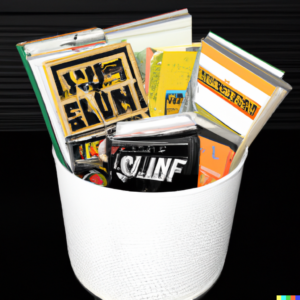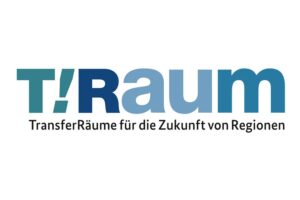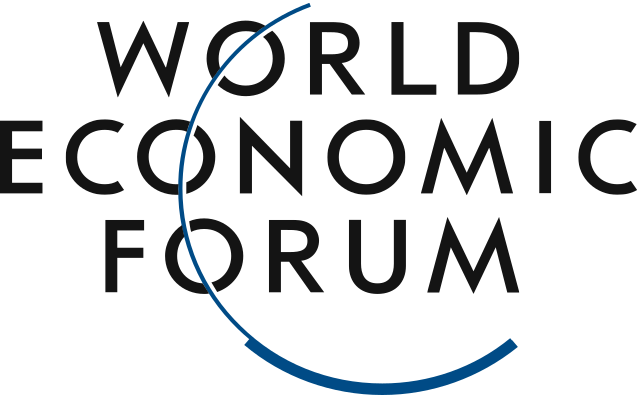Burmeister, D.; Tran, H. A.; Müller, J.; Guerrini, M.; Cocchi, C.; Plaickner J.; Kochovski, Z.: List-Kratochvil, E.; Bojdys,* M. J. Angew. Chem. Int. Ed. 2021. DOI: 10.1002/anie.202111749 [OPEN ACCESS]
 Crystalline semiconducting carbon nitrides are chemically and physically resilient, consist of earth abundant elements, and can be exfoliated into 2D atomically thin layers. In particular, poly(triazine imide) (PTI) is a highly crystalline semiconductor, and though no techniques exist to date that enable synthesis of macroscopic monolayers of PTI, it is possible to study it in thin layer device applications that are compatible with its polycrystalline, nanoscale morphology. In our study, we find that the by-product of conventional PTI synthesis is a C-C carbon rich phase that is detrimental for charge transport and photoluminescence. An optimised synthetic protocol yields a PTI material with an increased quantum yield, enabled photocurrent and electroluminescence. In addition, we report that protonation of the PTI structure happens preferentially at the pyridinic nitrogen atoms of the triazine (C3N3) rings, is accompanied by exfoliation of PTI layers, and contributes to increases in quantum yield and exciton lifetimes. This study describes structure-property relationships in PTI that link (i) the nature of defects, their formation, and how to avoid them with (ii) the optical and electronic performance of PTI. On the basis of our findings, we create an OLED prototype with PTI as the active, metal-free material, and we lay the foundations for device integration of solution-processable graphitic carbon nitride dispersions in semiconductor devices.
Crystalline semiconducting carbon nitrides are chemically and physically resilient, consist of earth abundant elements, and can be exfoliated into 2D atomically thin layers. In particular, poly(triazine imide) (PTI) is a highly crystalline semiconductor, and though no techniques exist to date that enable synthesis of macroscopic monolayers of PTI, it is possible to study it in thin layer device applications that are compatible with its polycrystalline, nanoscale morphology. In our study, we find that the by-product of conventional PTI synthesis is a C-C carbon rich phase that is detrimental for charge transport and photoluminescence. An optimised synthetic protocol yields a PTI material with an increased quantum yield, enabled photocurrent and electroluminescence. In addition, we report that protonation of the PTI structure happens preferentially at the pyridinic nitrogen atoms of the triazine (C3N3) rings, is accompanied by exfoliation of PTI layers, and contributes to increases in quantum yield and exciton lifetimes. This study describes structure-property relationships in PTI that link (i) the nature of defects, their formation, and how to avoid them with (ii) the optical and electronic performance of PTI. On the basis of our findings, we create an OLED prototype with PTI as the active, metal-free material, and we lay the foundations for device integration of solution-processable graphitic carbon nitride dispersions in semiconductor devices.
Press-releases: [IRIS, EN], [IRIS, DE], [KCL, EN], [HU, DE]
DOI: 10.1002/anie.202111749





 Ionothermal condensation of dicyandiamide in alkali halide salt melts leads to the formation of extended 2D, layered frameworks only in the presence of small halides such as chloride, and bromide. With increasing size of the alkali halide intercalate, stabilizing van der Waals interactions between extended, π-conjugated triazine-based sheets are lost. We identify the main, crystalline product from an alkali iodide eutectic as melem hydrate, a heptazine (C6N7)-based, hydrogen-bonded, monoclinic solid.
Ionothermal condensation of dicyandiamide in alkali halide salt melts leads to the formation of extended 2D, layered frameworks only in the presence of small halides such as chloride, and bromide. With increasing size of the alkali halide intercalate, stabilizing van der Waals interactions between extended, π-conjugated triazine-based sheets are lost. We identify the main, crystalline product from an alkali iodide eutectic as melem hydrate, a heptazine (C6N7)-based, hydrogen-bonded, monoclinic solid.


 Crystalline semiconducting carbon nitrides are chemically and physically resilient, consist of earth abundant elements, and can be exfoliated into 2D atomically thin layers. In particular, poly(triazine imide) (PTI) is a highly crystalline semiconductor, and though no techniques exist to date that enable synthesis of macroscopic monolayers of PTI, it is possible to study it in thin layer device applications that are compatible with its polycrystalline, nanoscale morphology. In our study, we find that the by-product of conventional PTI synthesis is a C-C carbon rich phase that is detrimental for charge transport and photoluminescence. An optimised synthetic protocol yields a PTI material with an increased quantum yield, enabled photocurrent and electroluminescence. In addition, we report that protonation of the PTI structure happens preferentially at the pyridinic nitrogen atoms of the triazine (C3N3) rings, is accompanied by exfoliation of PTI layers, and contributes to increases in quantum yield and exciton lifetimes. This study describes structure-property relationships in PTI that link (i) the nature of defects, their formation, and how to avoid them with (ii) the optical and electronic performance of PTI. On the basis of our findings, we create an OLED prototype with PTI as the active, metal-free material, and we lay the foundations for device integration of solution-processable graphitic carbon nitride dispersions in semiconductor devices.
Crystalline semiconducting carbon nitrides are chemically and physically resilient, consist of earth abundant elements, and can be exfoliated into 2D atomically thin layers. In particular, poly(triazine imide) (PTI) is a highly crystalline semiconductor, and though no techniques exist to date that enable synthesis of macroscopic monolayers of PTI, it is possible to study it in thin layer device applications that are compatible with its polycrystalline, nanoscale morphology. In our study, we find that the by-product of conventional PTI synthesis is a C-C carbon rich phase that is detrimental for charge transport and photoluminescence. An optimised synthetic protocol yields a PTI material with an increased quantum yield, enabled photocurrent and electroluminescence. In addition, we report that protonation of the PTI structure happens preferentially at the pyridinic nitrogen atoms of the triazine (C3N3) rings, is accompanied by exfoliation of PTI layers, and contributes to increases in quantum yield and exciton lifetimes. This study describes structure-property relationships in PTI that link (i) the nature of defects, their formation, and how to avoid them with (ii) the optical and electronic performance of PTI. On the basis of our findings, we create an OLED prototype with PTI as the active, metal-free material, and we lay the foundations for device integration of solution-processable graphitic carbon nitride dispersions in semiconductor devices.